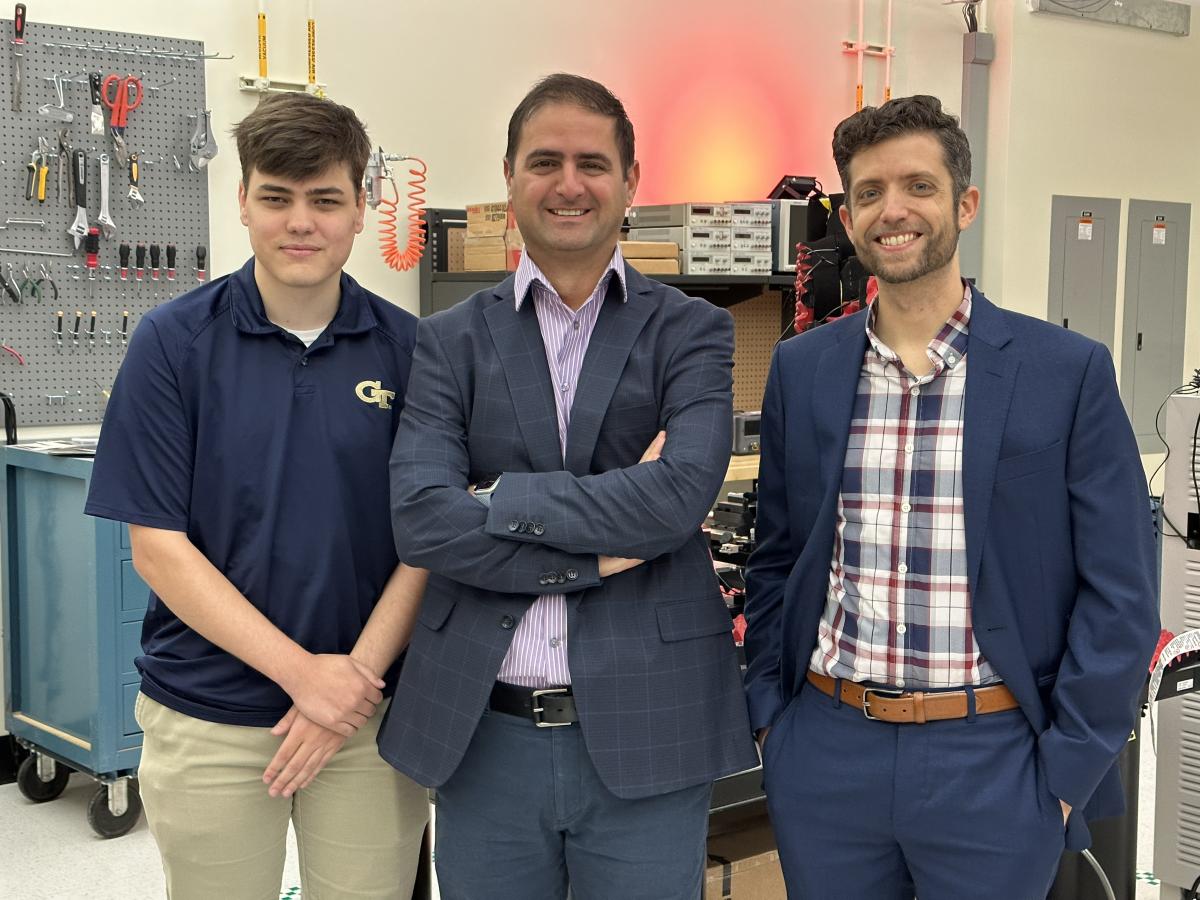
Graduate researcher Walter Disharoon, ECE Professor Nima Ghalichechian, and GTRI's Dr. Joshua Kovitz in Georgia Tech’s mmWave Antennas & Arrays Lab.
Now in its third year, the Georgia Tech Research Institute’s (GTRI) Graduate Student Research Fellowship Program (GSFP) has announced funding for seven new projects. The GSFP is designed to encourage collaboration and innovation by bringing together exceptional graduate students and Georgia Tech researchers.
Among these initiatives is a collaborative effort with the Georgia Tech School of Electrical and Computer Engineering (ECE) focused on the development of reconfigurable metasurfaces — artificially engineered nanostructures that manipulate and control electromagnetic waves — specifically tailored for high-power microwave (HPM) systems, commonly utilized in defense-related contexts.
Leading the way on the project is ECE graduate researcher Walter Disharoon, accompanied by ECE Professor Nima Ghalichechian and Dr. Joshua Kovitz, chief scientist of the electromagnetics division at GTRI.
“Being chosen for the GTRI GSFP is not only an immense honor but also grants me a remarkable chance to pursue research that closely aligns with my interests and the opportunity to collaborate with two top experts in the field,” said Disharoon.
The research team plans to leverage the transformative properties of vanadium dioxide (VO2), a phase change material, to fabricate versatile metasurfaces. These metasurfaces hold the potential to revolutionize high-power microwave (HPM) applications by altering the control and manipulation of wave beams in terms of their direction, shape, and polarization.
As a phase change material, VO2, has a reversible transition from an insulator to a metal when the temperature exceeds about 68°C.
“Phase-change materials offer a completely new paradigm for the ubiquitous RF switch, a fundamental building block in sensor and electronic warfare systems,” said Kovitz and Ghalichechian.
In addition to their functional capabilities, the VO2 metasurfaces provide an extra level of defense for electronic components. The metasurfaces are specifically engineered to allow low-power waves to pass through unaffected. However, if a malicious high-power wave or unintentional interference source tries to breach the surface, the metasurface rapidly heats up and switches into a reflective state. This phase-change transformation acts as a protective shield, ensuring the safety of the valuable and fragile electronics positioned behind the surface.
The research team's goals include demonstrating multiple reconfigurable metasurfaces for dual-use applications, paving the way for future sponsored work. The initial phase focuses on designing and fabricating the metasurfaces using cutting-edge microfabrication techniques. The surfaces will then undergo comprehensive characterization using advanced measurement facilities at both Georgia Tech and GTRI.